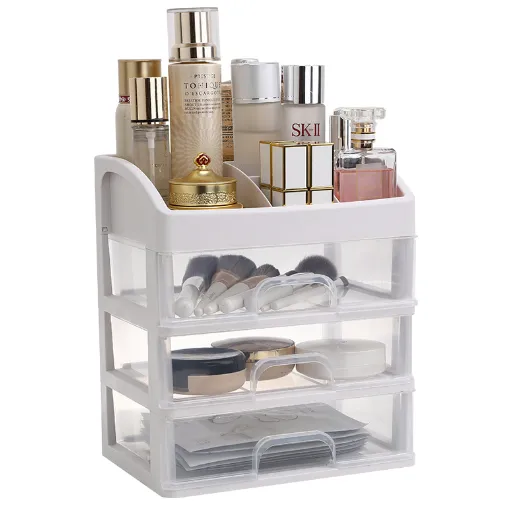- 150m meridiem, West DingWei Road, Nanlou Villa, Changan Urbs, GaoCheng Area, Shijiazhuang, Hebei, China
- monica@foundryasia.com
Jul . 21, 2025 13:41 Ad album
Choosing the Right Shop Fittings: Wood, Metal, and What Works Best for Your Space
Whether you're launching a new store, redesigning your retail space, or simply upgrading your fixtures, your choice of shop fittings matters more than you think. It’s not just about looks—it’s about layout, durability, functionality, and how your products are perceived by customers.
Good fittings help you tell a visual story. Great ones make your space work harder: boosting efficiency, guiding foot traffic, and increasing sales. From classic wood shop fittings to sleek, modern metal shop fittings, selecting the right materials can shape the entire customer experience.
Here’s how to choose fittings that match your brand, stand up to wear and tear, and stay flexible as your business grows.

What Are Shop Fittings?
Shop fittings refer to the fixtures and equipment used to display, store, and organize merchandise in a retail environment. This includes shelving, display units, counters, racks, cabinets, signage holders, and storage behind the scenes.
The two most common material categories are:
Wood shop fittings – warm, traditional, and highly customizable
Metal shop fittings – strong, modern, and durable
Often, the most effective store layouts use a mix of both to balance style and strength.
Why Shop Fittings Matter
First impressions sell – Your fixtures influence how customers perceive your brand and product quality.
Flow affects sales – Smart layouts with the right fittings increase dwell time and conversions.
Durability saves money – Poor-quality fixtures break easily and need frequent replacement.
Adaptability = long-term value – Good fittings can be reconfigured or updated for seasonal layouts and new stock.
Wood Shop Fittings: Warmth, Style, and Versatility
Wood shop fittings add texture, character, and an upscale feel to retail environments. They're often used in boutiques, bookstores, fashion shops, organic stores, and lifestyle retailers.
Advantages:
Aesthetic Flexibility: Wood blends with almost any theme—rustic, modern, vintage, or industrial.
Customizable: Easily cut, painted, or stained to match brand colors or store concepts.
Sustainable Options: Reclaimed or FSC-certified wood appeals to eco-conscious shoppers.
Common Uses:
Display tables
Wall-mounted shelves
Wooden counters and cash wraps
Gondolas and slatwall panels
Feature walls and signage displays
Considerations:
Wood can warp in high humidity or under heavy loads.
Needs sealing or protective coatings for high-traffic zones.
Generally heavier and more expensive than metal.
Metal Shop Fittings: Strength Meets Modern Design
Metal shop fittings are the backbone of most high-traffic or industrial-themed retail environments. Think electronics stores, convenience shops, supermarkets, or fashion chains with minimalist branding.
Advantages:
Durability: Withstands heavy use, loading, and frequent reconfiguration.
Slim Profile: Sleek, minimalist lines let products take center stage.
Modular: Compatible with slatwall, gridwall, pegboard systems, and universal racking.
Common Uses:
Garment racks
Gondola shelving
Gridwall or slatwall accessories
Freestanding displays and dump bins
Reinforced wall mounts for heavy goods
Considerations:
Can look cold or sterile without warm accents (e.g., lighting or wood trims).
Steel fittings are heavy—aluminum offers a lighter alternative.
Wood vs. Metal Shop Fittings: Which Should You Choose?
|
Feature |
Wood Shop Fittings |
Metal Shop Fittings |
|
Aesthetics |
Warm, organic, customizable |
Modern, sleek, industrial |
|
Durability |
Moderate (needs care) |
High (ideal for heavy loads) |
|
Cost |
Higher material cost |
Lower to mid-range |
|
Maintenance |
Requires sealing, cleaning |
Low-maintenance |
|
Branding Fit |
Lifestyle, boutique, eco |
Urban, tech, value retail |
|
Reusability |
High with custom carpentry |
Very high in modular systems |
Pro tip: For most retailers, a hybrid approach works best. Use wood shop fittings for front-of-house styling and metal shop fittings for strength and function behind the scenes or in high-load zones.
Trends in Modern Shop Fitting
Modular displays: Easily reconfigured for seasonal campaigns or product changes.
Sustainable materials: Bamboo, recycled steel, and reclaimed wood are in demand.
Industrial-modern hybrids: Mixing wood tops with steel frames.
Lighting integration: Built-in LED strips on shelves or under racks.
Digital displays: Fixtures that integrate signage or screens for promotions.
Shop Fittings FAQs
Q1: Are wood shop fittings strong enough for heavy products?
A: Yes—if built properly. Use hardwoods like oak or birch for high-load areas, and make sure shelves are supported with metal brackets or reinforcements
Q2: Can metal shop fittings be customized?
A: Absolutely. Many come in powder-coated finishes with options for custom colors, textures, and integrated branding panels.
Q3: What’s the best way to maintain wood shop fittings?
A: Clean with a damp cloth and mild cleaner. Avoid abrasive products. For longevity, apply a sealant or protective coating annually in high-traffic areas.
Q4: Are there modular systems that combine wood and metal?
A: Yes. Many shopfitting manufacturers now offer hybrid systems—metal frames with wood shelves, or interchangeable components using both materials.
Q5: Where can I find affordable shop fittings for a small store?
A: Start with local suppliers, commercial furniture resellers, or online marketplaces. Some manufacturers also offer pre-owned or end-of-line stock at reduced prices.
-
Square Cast Iron Cookware Picks
NewsJul.21,2025
-
Seasoned Cast Iron Grill For Everyday Cooking
NewsJul.21,2025
-
Preseason Cast Iron Made Easy
NewsJul.21,2025
-
Pre Seasoned Cast Iron for Daily Cooking
NewsJul.21,2025
-
Cast Iron Wok Cooking Power
NewsJul.21,2025
-
Cast Iron Grill Pan For Stovetop Use
NewsJul.21,2025